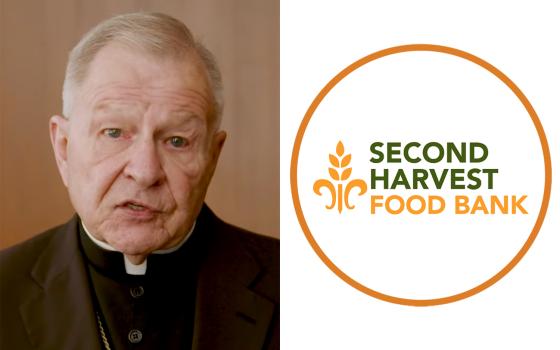By JOHN L. ALLEN JR.
Baltimore
In overwhelming fashion, the U.S. bishops today voted to prepare new statements on in vitro fertilization and embryonic stem cell research. The proposal for a document on stem cells actually passed with 100 percent of the vote, the first unanimous ballot of the meeting.
Both documents will be prepared by the Committee on Pro-Life Activities, led by Cardinal Justin Rigali of Philadelphia. The text on stem cells is slated for approval at the bishops’ summer meeting in June, while the document on reproductive technologies will come up for a vote at the November meeting in 2008.
Rigali presented the stem cell initiative as a response to cultural and political pressures, citing what he called the adoption of “gravely immoral initiatives” in both Missouri and California, approving state funding for embryonic stem cell research despite objections from the bishops.
“A clear and firm statement about bishops’ position is more urgent than ever,” Rigali said.
Rigali said the document will represent the first time the American bishops address the question of embryonic stem cell research in authoritative fashion as a body.
The two documents will have different styles, Rigali said. The statement on stem cells is intended as a brief presentation of the church’s moral teaching, while the document on in vitro fertilization and othee reproductive technologies will have an “appealing and pastoral tone,” presented in question-and-answer format. It’s to be pitched, Rigali said, at young people and married couples who aren’t familiar with the reasons the Catholic church objects to in vitro fertilization.
Nonetheless, Rigali said, the two documents are linked because both turn on the church’s defense of human life from the moment of conception, which implies that embryos cannot be treated as a means to an end. That rules out both the destruction of embryos in research, as well as the production of “surplus embryos” through in vitro fertilization.
Bishop Robert Finn of Kansas City spoke in favor of the project, saying that efforts in Missouri to oppose the stem cell initiative may have failed in terms of blocking the referendum, but they did result in a significant narrowing of the gap – moving public opinion, Finn said, from 70/30 in favor to the eventual result of 51/49.
Bishop Thomas Olmsted of Phoenix summarized the results of discussions within the National Advisory Council, created two years ago to give the bishops feedback from the Catholic grassroots.
The council, Olmsted said, backed the idea of preparing documents on these two subjects. Members, he said, cited a “serious lack of knowledge and understanding” among both health care professionals and average Catholics about the church’s bioethical positions, as well as a perceived need to counter a “mainstream media and socio-cultural bias contrary to Catholic teaching on these issues.”
BACKGROUND ON IN VITRO FERTILIZATION (IVF)
More than three million babies worldwide have been born using in vitro techniques. Today, 2.5 percent of all live births in the United Kingdom occur with IVF, and approximately 27,000 procedures are performed each year in the United States. IVF has become big business; the total spent in the United States annually is estimated at around $4 billion.
The Catholic Church is unambiguously anti-IVF. Its objections include:
•tIVF separates the act of love-making from procreation, rupturing something meant to be unified, which is the same objection the Church has to birth control and to cloning. That critique applies to all kinds of IVF.
•tHeterologous IVF also damages the family by separating the biological and emotional aspects of parenthood.
•tBecause IVF involves the creation of multiple embryos which are either discarded or frozen, it’s a violation of the right to life.
•tSperm generally comes from masturbation, compounding the moral difficulties.
•tSince IVF techniques usually involve the implantation of multiple embryos to increase the odds of pregnancy, it’s common for the “excess” embryos to be eliminated early in pregnancy by an injection of potassium chloride, a procedure known as fetal reduction, which the Church regards as a form of abortion.
Some reform-minded Catholic theologians, however, have reached a more positive conclusion about the morality of IVF, especially its homologous form. Usually they make two basic arguments. First, they say that an embryo cannot be regarded as a person until it’s past the point where twinning is possible. They point to wastage: scientists say that the natural rate of loss for embryos in the earliest stages after conception is 60 to 80 percent. How could God bring into being so many persons, this argument runs, only to let them perish when their lives have hardly begun? Second, while IVF separates intercourse and procreation, it does so for the purpose of procreation, not contraception. They often argue that separation between intercourse and procreation is a pre-moral evil, which can be justified for a proportionate reason – in this case, to conceive a child.
BACKGROUND ON EMBRYONIC STEM CELL RESEARCH
Embryonic stem cells have long been considered the holy grail of cellular biology, because they are capable of growing into any of the 220 or so types of cells found in the human body. They are of research interest for two major reasons. First, studying them helps scientists understand the molecular processes that trigger degenerative cellular disorders such as Alzheimer’s. Second, embryonic stem cells could provide a source of transplantable cells and tissues. Many researchers hope that embryonic stem cells may be used to treat Parkinson’s disease, which affects a small and specialized mass of brain cells, or to restore function to victims of spinal cord injuries such as Christopher Reeve.
On November 10, 1998, just four days after the U.S.-based Geron Corporation announced that scientists had isolated stem cells from “leftover” embryos at fertility clinics for the first time, , Bishop Elio Sgreccia, vice-president of the Vatican’s Pontifical Academy for Life, told reporters that the procedure was morally illegitimate because it involved the destruction of embryos. Respect for human life, Sgreccia said, demands “respect for embryos and fetuses.”
That reaction has largely defined the Catholic position ever since.
Because of their scientific and medical potential, however, a number of Catholic researchers have sought morally acceptable alternatives to acquire stem cells. Many point to adult stem cells found in umbilical cords, the placenta, amniotic fluid, adult tissues and organs such as bone marrow, fat from liposuction, regions of the nose, and even from cadavers up to 20 hours after death. Some scientists say adult cells work just as well as embryonic cells, if not better, pointing out that to date not a single therapy has been developed from embryonic stem cells, while adult stem cells are used in scores of treatments. Other scientists, however, argue that adult cells lack the full plasticity of embryonic cells.
At least two other possibilities have been floated.
One comes from Drs. Donald Landry and Howard Zucker of Columbia University, who suggest that it may be possible to identify a moment at which embryos are “dead.” Landry suggests that death can be flagged by “the irreversible arrest of cell division,” meaning a point at which the embryo stops expanding – a marker that would apply to a substantial majority of the embryos now frozen in IVF clinics, perhaps as many as 75 percent. Once an embryo is dead, then using it for research purposes is no different than using a human cadaver. Ethicists, however, have raised two objections. One is that the absence of division may not be an infallible indicator of death. The other is that approval of such a procedure may simply encourage the creation of embryos for the sake of waiting for them to die.
A second alternative has been pioneered by Dr. William Hurlbut of Stanford University. He proposes a method called “altered nuclear transfer,” which means creating cellular systems that resemble embryos, but which lack some of the defining elements of human life. Certain tumors, for example, contain stem cells that can produce full body parts and organs. (There are instances of ovarian tumors which have actually generated a set of teeth inside a woman’s uterus). Hurlbut’s proposal is to create such an entity on purpose, “turning off” its genes essential for development into a human being. Like a tumor, he says, destroying such an entity to harvest its stem cells would not raise moral problems.
“This is the organic equivalent to a model airplane kit without the glue; you have parts but no capacity to form a whole,” Hurlbut said of his proposed cellular mass in late 2006.
Hurlbut’s idea has powerful Catholic backing. Signatories to a statement endorsing it include prominent Catholic ethicists such as William May and Germain Grisez, as well as Archbishop John Myers of Newark. Cardinal William Levada was positively inclined while he was still the Archbishop of San Francisco. Levada wrote President Bush on Hurlbut’s behalf, saying, “This proposal offers hope that there may be a solution to an area of great challenge and controversy.”
Yet there are also strong Catholic critics, such as David Schindler, editor of the American version of Communio and professor at the John Paul II Institute in Washington. Schindler argues that altered nuclear transfer shares the same philosophical premises as embryonic stem cell research, specifically a mechanistic metaphysics that treats organisms as machines. Imagine, he says, that scientists could engineer an embryo so that it would grow into an entire body, minus the cerebral cortex. Could we then kill it and use its organs? Others reject the claim that Hurlbut’s cellular mass is not an embryo. Robert Streiffer, a professor of philosophy and bioethics at the University of Wisconsin, argues that altered nuclear transfer simply creates a “disabled embryo.”



